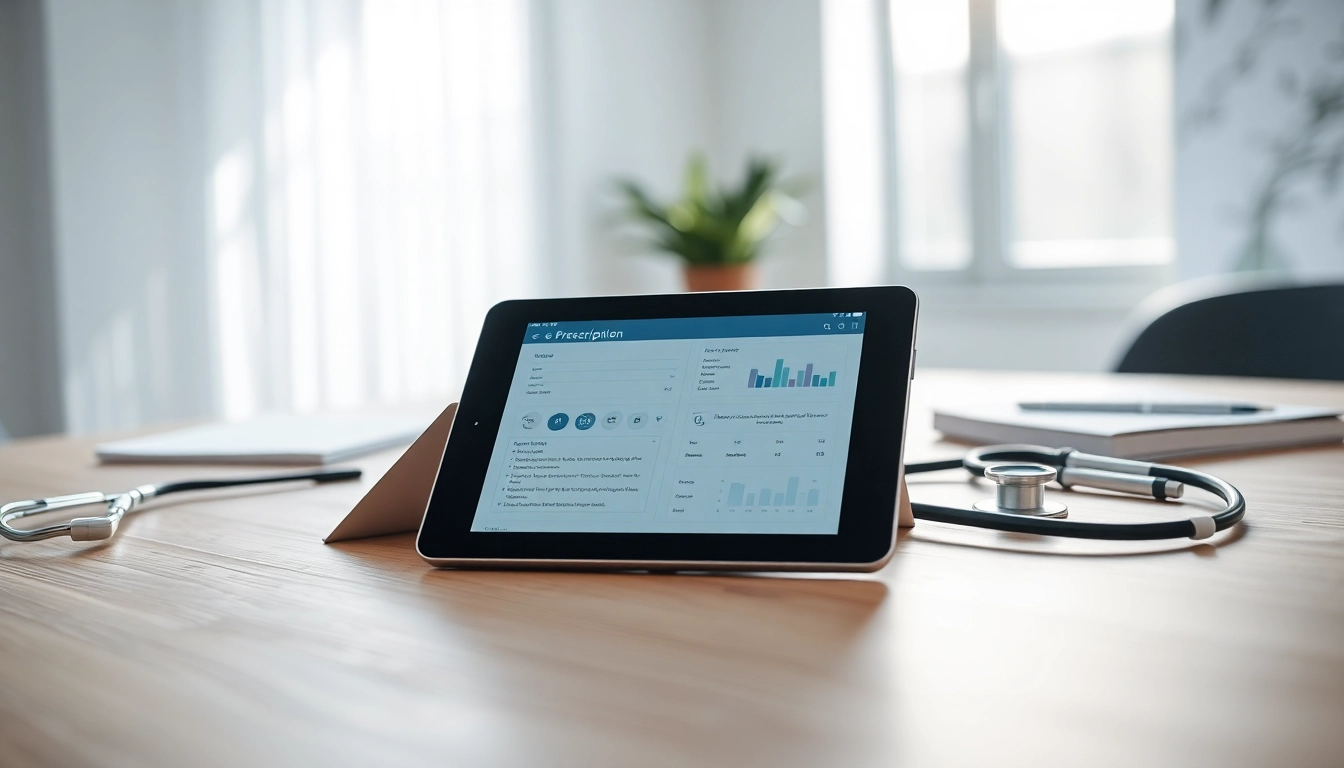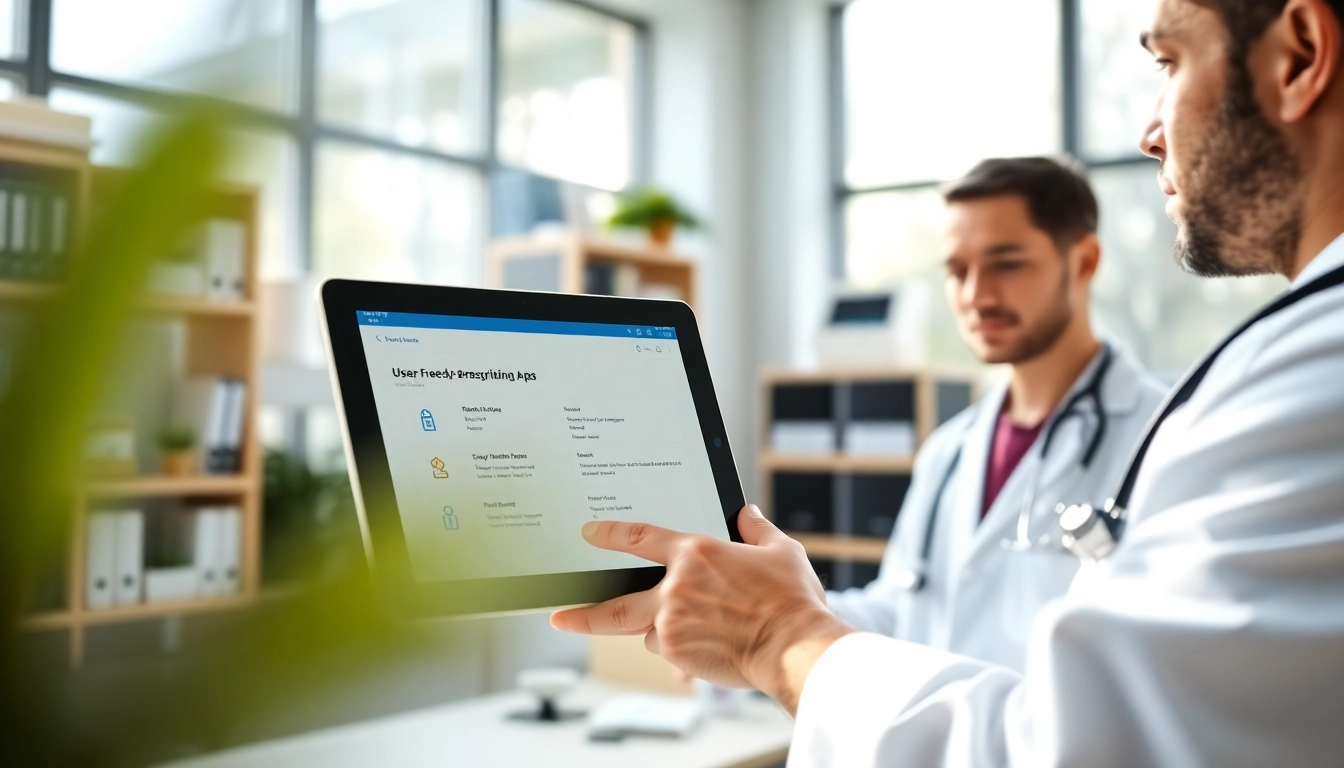Overview of Free E-Prescription Apps
The healthcare industry is constantly evolving, and the advent of digital solutions has become essential for improving efficiency and patient care. One such innovation is the use of electronic prescribing or e-prescribing applications. These tools allow healthcare providers to send prescriptions electronically to pharmacies, streamlining the process and reducing errors. The rising demand for free eprescription apps has led to the development of various platforms that cater to different needs and specialties within the medical community.
Definition and Importance
E-prescribing is defined as the electronic generation, transmission, and filling of medical prescriptions. This system enables clinicians to send prescriptions directly to a pharmacy of the patient’s choice, which enhances the accuracy of prescriptions and patient safety. The importance of e-prescribing cannot be overstated; it reduces the likelihood of medication errors, improves patient compliance, and facilitates better monitoring of prescription patterns. With the integration of patient records and medication histories, providers can make more informed decisions regarding a patient’s treatment plan.
Benefits of Using Free E-Prescription Apps
Utilizing free e-prescription apps offers numerous benefits, both for providers and patients. Key advantages include:
- Improved Efficiency: E-prescribing automates the prescription process, saving time for healthcare professionals and reducing waiting periods for patients.
- Enhanced Accuracy: By eliminating handwritten prescriptions, the likelihood of misinterpretation or error is significantly decreased, ensuring patients receive the correct dosage and medication.
- Patient Safety: E-prescribing apps often include checks for drug interactions and allergies, enhancing patient safety through informed prescription writing.
- Cost Savings: Free e-prescribing apps can help reduce operational costs, as they often integrate with existing Electronic Health Record (EHR) systems and diminish paperwork.
Who Can Benefit from These Applications
Various stakeholders within the healthcare system can benefit from e-prescribing applications, including:
- Physicians: Streamlined processes allow clinicians to focus more on patient care than paperwork.
- Pharmacists: E-prescribing facilitates quicker processing of prescriptions, improving service delivery.
- Patients: Patients experience greater convenience and safety, with fewer chances for errors.
- Healthcare Facilities: Clinics and hospitals can operate more efficiently, improving overall patient throughput.
Key Features to Look for in Free E-Prescription Apps
When selecting a free e-prescribing app, certain features are essential to ensure it meets the needs of users. Here are some critical aspects to consider:
User Interface and Experience
A clean, intuitive interface is crucial for any e-prescribing application. A well-designed app should be user-friendly, enabling clinicians of all technological backgrounds to navigate effortlessly. Key features to look for include customizable dashboards and quick access to frequently prescribed medications. An uncomplicated interface can lead to reduced training time and increased user satisfaction, directly influencing the app’s effectiveness.
Integration with Existing Systems
Integration capabilities are vital when choosing an e-prescribing app. The ability to synchronize with existing Electronic Health Records (EHR) systems will not only streamline workflows but also enhance the quality of patient care. Look for apps that offer seamless import-export functionalities and connect with healthcare provider networks to easily share patient data across platforms.
Security and Compliance Measures
Security is paramount in any healthcare technology. Ensure that the e-prescribing app adheres to relevant regulations, such as HIPAA in the United States. This includes secure data encryption, user authentication, and audit trails to track prescription modifications. Compliance with local regulations is crucial for protecting patient information and avoiding legal consequences.
Popular Free E-Prescription Apps in 2025
As electronic prescribing continues to gain traction, several free apps are becoming increasingly popular among healthcare providers. Below is an overview of some notable applications currently available:
Comparative Analysis of Top Choices
In a competitive environment dominated by various applications, it is essential to compare options based on features, usability, and overall efficacy. Some of the most frequently recommended free e-prescribing apps include:
Unique Selling Points of Each App
Each application brings unique features to the table. For example, one app may excel in offering customization options, while another might include advanced medication management tools. By evaluating these unique selling points, providers can determine which application best fits their specific needs. Analyzing user reviews and case studies can also provide insights into the benefits and potential challenges of each app.
User Reviews and Feedback
Understanding user experiences is vital in selecting an effective e-prescribing tool. Look for apps that have received positive feedback regarding ease of use, customer support, and reliability. Reviewing user testimonials can also shed light on real-life scenarios, helping potential users anticipate challenges and solutions when implementing a new system.
Implementation Steps for Clinics
Once a free e-prescribing app has been selected, careful implementation is critical for success. Below are essential steps to consider:
Initial Setup and Configuration
The initial setup can vary depending on the application chosen. However, common steps typically include creating user accounts, configuring settings to align with clinic protocols, and customizing templates for common prescriptions. Testing the application with a small group before a full rollout can help identify potential issues early on.
Training Staff for Optimal Use
Providing comprehensive training for all staff members is crucial to ensure the effective use of the e-prescribing app. This might involve hosting workshops, creating training manuals, or utilizing online resources provided by the app developers. Emphasizing hands-on practice can greatly enhance comfort and competence levels among users.
Monitoring Effectiveness and Performance
After implementation, it is vital to continually monitor the app’s performance to identify areas for improvement. Setting measurable objectives, such as reducing prescription errors or improving processing times, can help gauge the application’s impact. Regularly soliciting feedback from users will provide valuable insights into ongoing challenges that need to be addressed.
Future Trends in E-Prescribing
The landscape of e-prescribing is constantly evolving, influenced by technological advancements and changing healthcare regulations. Here are some trends to watch:
Technological Advances and Features
Emerging technologies such as telemedicine, blockchain, and machine learning offer exciting opportunities for the future of e-prescribing. These features could significantly enhance the functionality of e-prescribing apps, enabling real-time patient monitoring, advanced analytics for prescription patterns, and improving medication adherence through automated alerts.
The Role of AI in E-Prescribing
Artificial Intelligence (AI) is poised to play a crucial role in optimizing e-prescribing systems. AI can assist in analyzing patient data, suggesting therapeutic alternatives, and even predicting patient responses based on historical data. Such capabilities not only enhance decision-making but also promote personalized medicine, ultimately improving patient outcomes.
Predictions for the Next 5 Years
As the healthcare industry adapts to evolving demands, e-prescribing will likely become even more integral to the patient care continuum. Over the next five years, we can expect a significant increase in interoperability between different healthcare systems, leading to a more cohesive approach to patient management. As regulations continue to evolve, compliance will remain a significant driver of technology adoption, emphasizing the need for adaptable e-prescribing solutions that can grow with changing legislative landscapes.



